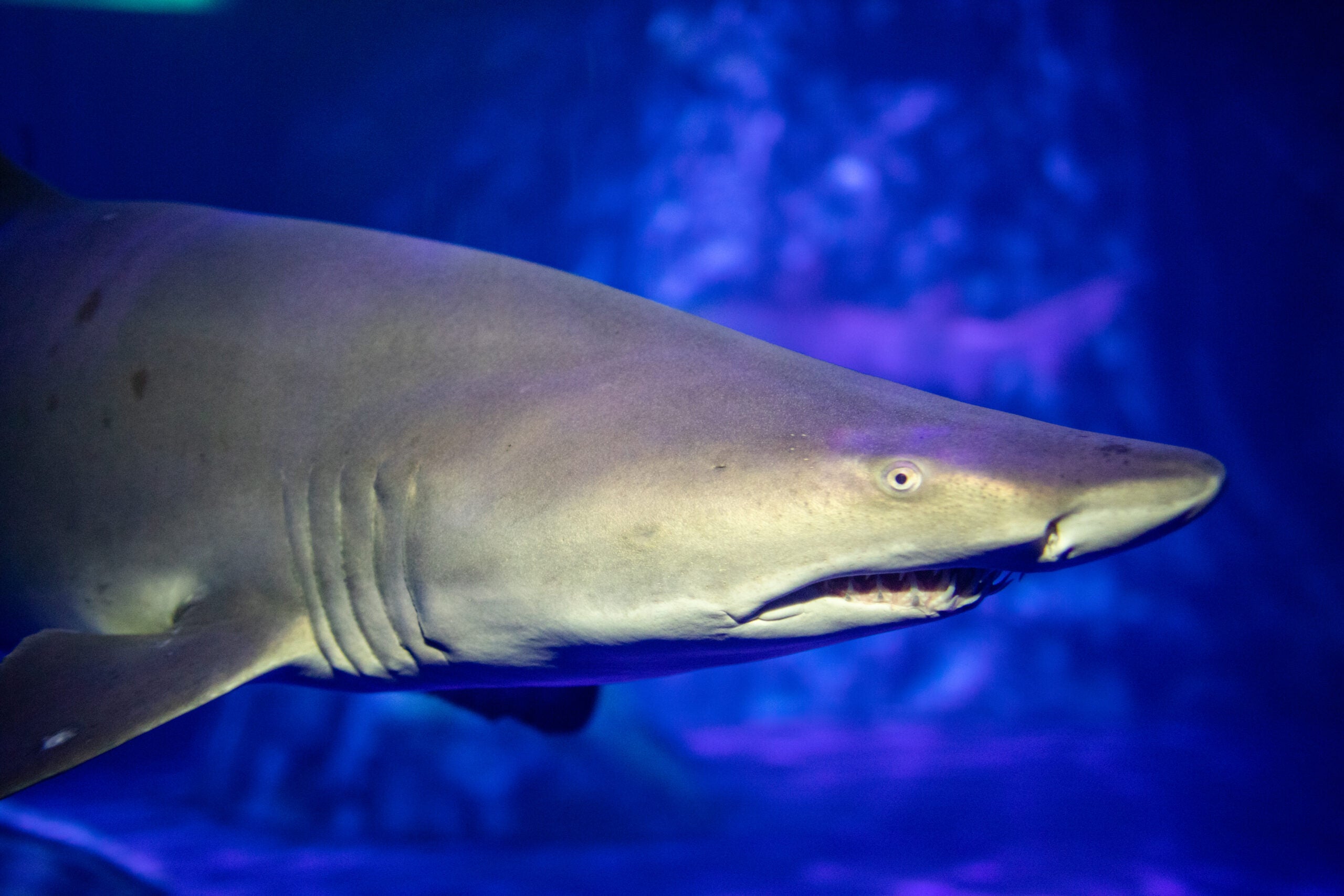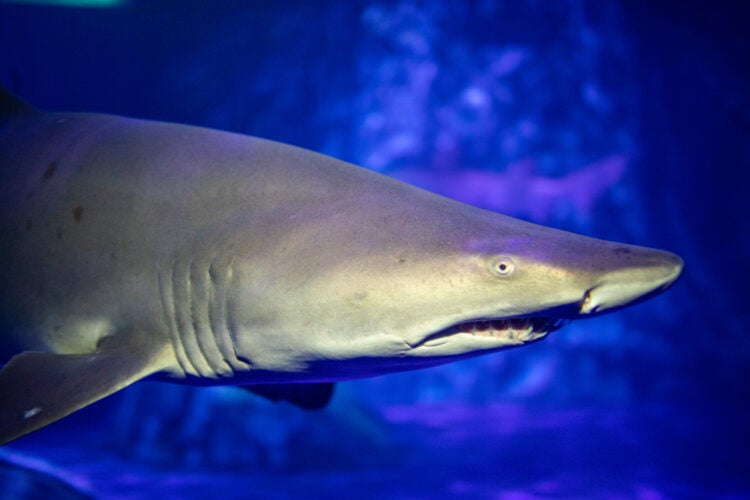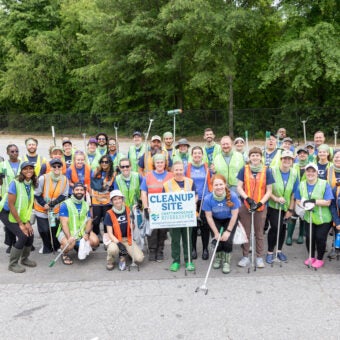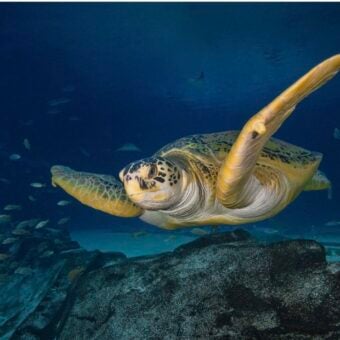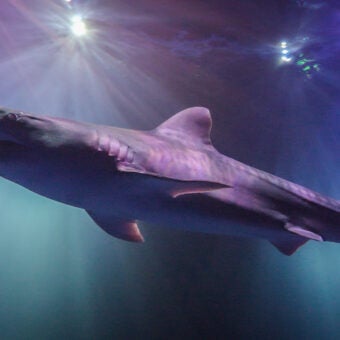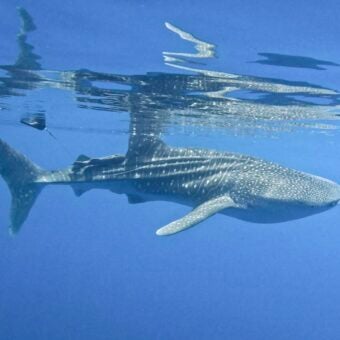Georgia Aquarium is an active partner and participant in The Global Shark Trends Project which concluded its multi-year assessment of extinction risk of 1,250 species of sharks, rays, and chimaeras. The Project is part of the International Union for Conservation of Nature (IUCN) and has come to a startling realization: these species’ populations have declined 71 percent in the last 50 years.
This important data sheds light on a rapidly growing problem in our oceans: many of its species may be headed towards extinction.
In a unique commitment to conservation by the Aquarium, researcher Katelyn Herman is a specially trained Red List Officer for the IUCN. The Red List is the most detailed, objective catalog of animal and plant species, documenting their risk of extinction and drawing a picture of the world’s biological health. She supports the IUCN’s Shark Specialist Group, working alongside leading scientists who contribute research to the Red List.
Georgia Aquarium is one of two facilities in the United States to commit this way to the IUCN, with Herman just one of three Red List Officers at facilities accredited by the Association of Zoos and Aquariums (AZA).
Herman’s work also makes Georgia Aquarium one of only 10 IUCN “Red List Hubs” developed worldwide with professional zoo organizations, where more Red List Officers will be trained. Hubs are now at ABQ BioPark in New Mexico, The Deep in England, Lisbon Oceanarium in Portugal, and another four are in development.
“Sharks were not originally a species I felt strongly about, but since getting involved in this project I’ve fallen in love with them. There are so many cool and unusual species of sharks, and they are too often overlooked and misunderstood,” Herman said.
She’s the only person on the team creating GIS (Geographic Information System) field maps, showing where every shark and ray species can be found across the planet. Herman’s research work at Georgia Aquarium also involves dolphin and whale shark research and GIS spatial analysis.
The maps also include a lot of other information, including species names, whether their range is seasonal, what year the assessment was done, the species’ status, and more. These maps also have longevity. They can be used for future policy planning and research studies past this project. With the rate of environmental threats and extinction risks, every Red List species must be re-assessed every 10 years, and maps must be updated.
The Global Shark Trends Project faced tough challenges. Fewer marine species have been assessed for the Red List than terrestrial species because it is hard to count animals in the depths of the ocean, especially when many species travel over wide ranges.
“Marine animals are more difficult,” Herman said. “You can’t wait by a watering hole to count them or track them on foot. It’s not easy to tag them and even when you can use photo identification on a species, it’s still a matter of whether or not that one individual happens to be in the exact place I am, at that moment.”
In 2018 and 2019, prior to the COVID-19 pandemic, Herman traveled to Brazil and Colombia to help assess the southwest Atlantic Ocean with experts and fisheries from other countries, including Colombia, Venezuela, Brazil, the Falkland Islands, and more.
“It’s more efficient to have the regional experts in one place,” Herman says. “They’ll share things such as the known habitat of a species, and how fishing activities are affecting the species in each region.”
It was a busy time for her – they assessed 120 species and found that range maps needed to be updated, or created, for 115 of them.
In addition to Herman’s diligent work with the Global Shark Trends Project and IUCN, Georgia Aquarium has also been the scene for important research decisions and collaboration among institutions. The Aquarium hosted a weeklong sawfish workshop in 2017, where experts came together and talked about how to best protect them.
“One of the coolest things I’ve done is help organize the sawfish workshop,” Herman says. “Before starting with the IUCN, I only knew about a handful of shark and ray species but being part of this project has broadened my knowledge and understanding to some of the most obscure, fascinating species I constantly cited IUCN in papers during college, and to now be engaging with this group professionally is a privilege.”
Georgia Aquarium’s commitment is part of a partnership between AZA and the IUCN, which in the past has relied on academic experts.
This article was published on: January 27, 2021
Georgia Aquarium is one of the largest aquariums in the world with more than 11 million gallons of water and tens of thousands of animals. Located in Atlanta, Ga., it is a premier animal care and research facility that is accredited by the Association of Zoos and Aquarium, the Alliance of Marine Mammal Parks and Attractions, Humane Certified by American Humane, and a Class R research institution certified by the USDA. By providing guests with unparalleled opportunities to learn about marine life, Georgia Aquarium is dedicated to unlocking the ocean’s wonder for all, providing transformative experiences that inspire a shared responsibility for conserving our aquatic ecosystems.
